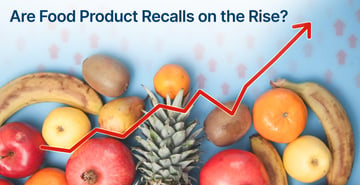From lab-grown meat and natural supplements to sustainable farming and non-GMO products, there are a number of various food trends across the industry that are changing the landscape for food and beverage companies. Consumers are prioritizing their health and well-being and seeking out sustainability and transparency in the products they purchase. As a result, companies must find ways to keep up with those evolving consumer preferences to meet demands, while also ensuring they remain compliant in their operations.
So, what can food and beverage companies do to keep their pulse on consumer trends while also continuing to innovate, produce, and profit? From keeping up-to-date with the latest regulatory guidance to investing in technological solutions, here are five strategies companies can leverage to stay on top of consumer food trends:
1. Get Involved with Industry Organizations.
The food industry is best equipped to serve consumers when it encourages collaboration and knowledge sharing, and businesses of any size can benefit – from long-standing brands to new entrants in the market. By joining industry organizations, networking events, or signing up for newsletters, companies can stay ahead of trends and the evolving needs of the consumer.
The past few years of pandemic-related disruptions demonstrated the power of collaboration and what can happen when companies come together to share best practices or lessons learned. So, keep this in mind when it comes to staying on top of consumer trends, too.
2. Keep Up-to-Date with Industry Regulations.
Consumers want to trust that food companies are doing everything they can to keep their food safe. Part of that means ensuring they’re remaining in compliance with government regulations, like with enhanced traceability recordkeeping to meet FSMA 204 requirements, or properly declaring sesame due to new allergen regulations.
In today’s environment, it’s crucial that companies know what the latest guidance is to ensure compliance and avoid any risk of a costly food product recall. When food product recalls happen, consumers can quickly abandon a food brand, with 43% of consumers reporting they won’t return to a brand until a few months have passed. However, there are also some consumers that will never come back – 18% of consumers responding to our 2021 Consumer Report on Food Transparency and Recalls said they will never go back to a brand that’s been recalled. Thus, food companies that don’t stay informed and educated on regulations risk falling behind and losing loyal customers.
3. Conduct Market Research and Leverage Social Media Listening.
Any business will tell you that it’s essential to know your customer. One strategy that food companies can follow to stay up to date with their customers is to conduct market research and leverage social media listening. This could involve conducting surveys, focus groups, or interviews with customers to understand their preferences and behaviors.
Additionally, you can use the market research of other companies in your industry to further identify trends. For example, our 2023 State of Traceability Report covered some of the major consumer trends pushing businesses to adopt traceability in 2023, like recall perceptions, digital evolutions, and regulatory changes.
Similarly, you can leverage social media listening tools to monitor what customers are saying about your brand, products, or the industry in general. By paying attention to social chatter, you can identify emerging trends and respond to consumer feedback quickly and effectively, which is critical in today’s fast-paced, digital environment.
4. Invest in Technology.
Consumers continue to prioritize food quality and safety, and they are expecting companies to provide that transparency in their operations, too. In order to keep up with this consumer expectation, companies need to invest in tools and solutions that can enable greater traceability and transparency into their supply chains.
What many companies may not realize is the benefits of more transparency doesn’t just impact its business operations; it impacts your business’ image to customers, too. With the right technology, companies can guarantee customers of the safety and quality of their products and respond rapidly and properly to outbreaks or labeling issues. The faster companies can respond, the more likely customers will stick with your brand. In our 2021 Consumer Report, 50% of respondents believe 1-2 days is an “acceptable amount of time for a food company to fully address a recall or foodborne illness.”
When it comes to consumer safety, there’s no room for error. Investing in a technology solution to help you guarantee food safety and supply chain transparency will help your company stay ahead of the game with ever-conscious consumers.
5. Reach Out to a Trusted Industry Partner.
Keeping up with industry regulations, monitoring market research, and investing in food safety technology can all help you stay ahead of consumer trends and preferences. However, that can be a lot to manage even with the right teams or processes in place.
Luckily, there are experts in the food world that can help you. Consider reaching out to a trusted advisor, like our regulatory consulting team at Trustwell, who have decades of experience and can provide guidance on industry regulations. Plus, our team of experts extend outside the consulting team, with people who have their pulse on the evolving landscape of consumer trends and other best practices companies can explore for improved quality, compliance, and traceability.
Trustwell Can Help
Put simply, the food industry is heavily influenced and swayed by consumers. As such, companies need to pursue strategies, like the ones listed above, to stay on top of trends and at the forefront of the industry while ensuring compliance and keeping costs low.
Reach out to our team at Trustwell today for more resources or information about our variety of SaaS solutions for the food industry.
Tag(s):
Other posts you might be interested in
View All Posts
Food Industry
10 min read
| June 5, 2023
Are Food Recalls on the Rise? How to Avoid the Most Common Recalls
Read More
Supplier Compliance
9 min read
| August 24, 2023
Lessons Learned from Major U.S. Recalls & How Traceability Tech Turns the Tide
Read More
Product Formulation
10 min read
| February 24, 2023

